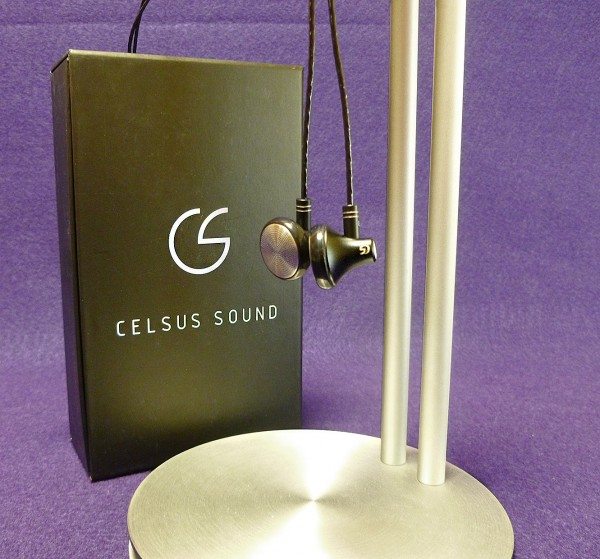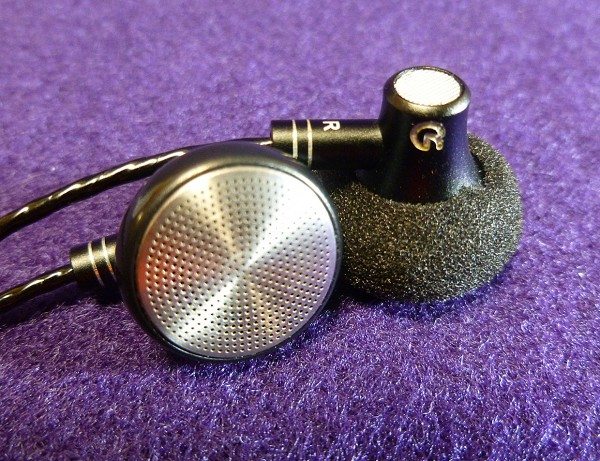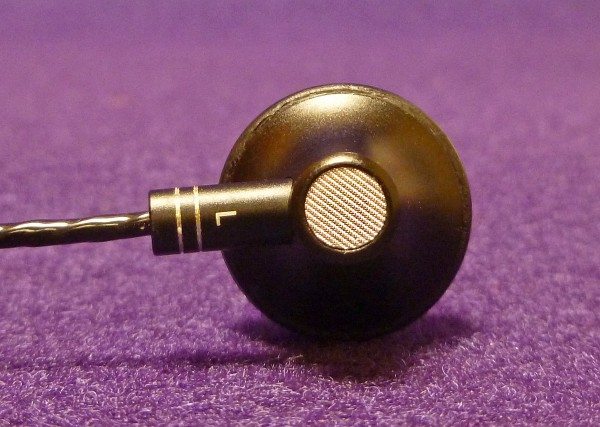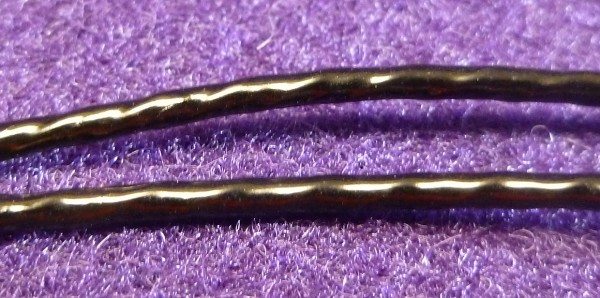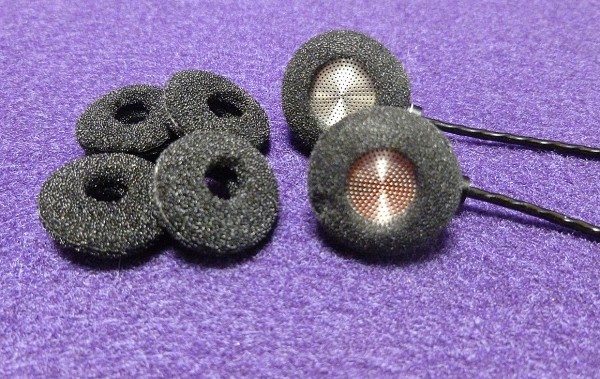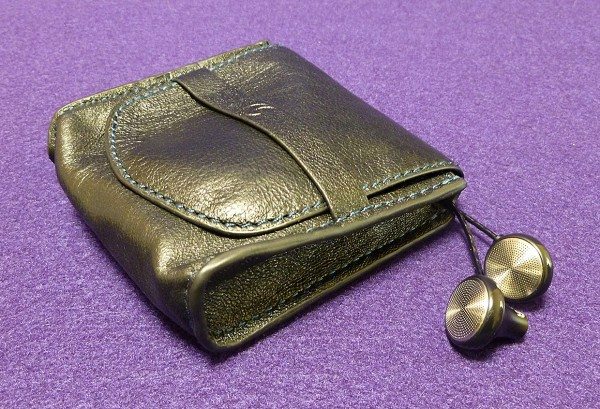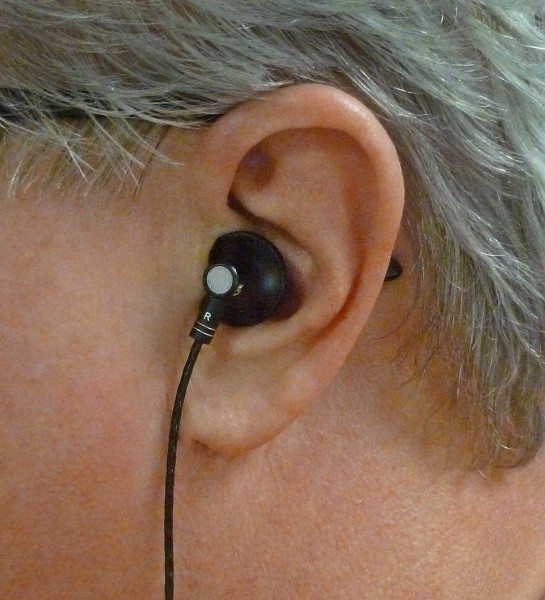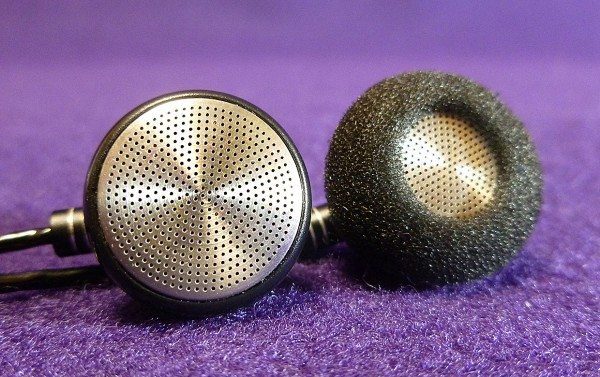I can almost guarantee you have never heard of Celsus Sound or its CEO, Jason Lim. Mr. Lim is the person behind NuForce, whose excellent—and affordable—earphones and digital audio converters have been reviewed by The Gadgeteer over the past few years. Last year, NuForce merged with Optoma freeing up Lim to start Celsus, which is a bit more unique and upscale than NuForce. Case in point is Celsus’ first earphone, the Gramo One in-ear headphone. Actually earphone is misleading. The Gramo One is technically an earbud. You read that right—earbud. If your first thought was (like mine), “Ugh”, you may want to re-think that. Notice I said “may.”
Let me state up front: I have never liked earbuds. I never liked how they sound and I never got over how uncomfortable they were in my ears. I was always trying to push them farther into my ears to get that perfect sound, but earbuds are not designed for that. That’s why we have earphones. The Celsus Gramo One in-ear headphone has changed my perception of what an earbud can sound like.
If you went on looks alone, the Gramo One would not win a beauty contest. They are not much better looking than any cheap earbud. However, that’s where the similarity ends. The Gramo One in-ear headphone is open-backed—as in expensive headphone open-backed. This simple, but difficult trick opens up the audio like no other earbud or earphone can. It’s astonishing. Whereas normal earbuds put the sound right inside your head, the Gramo One in-ear headphones move the virtual speakers out into space outside your head. It’s like listening to a pair of good speakers in a room in 3D space. It’s almost eerie.
The Gramo One earbuds are horn shaped with a giant 16mm proprietary transducer—a fancy word for speaker. The other side of the earphone is a tiny open grill which adds air and space to whatever music you are listening to. I know this sounds nebulous, but there’s no other way to describe it. The closest comparison I can make is open-backed headphones. The main difference is with open-backed headphones, many people can hear your music. With these open-backed earbuds, no one can hear your stuff (unless the volume is at a punishing level), but you still get the benefits of an open design. The specs of the Gramo One allow them to be driven by a low-powered smartphone to headphone amp with equal ease.
The Gramo One in-ear headphone has a twisted-wire cord that practically eliminates microphonics—that thumping sound one gets when the cord is tapped or brushes against clothing. It works so well, it makes me wonder why other earphone makers don’t use this approach. As with most earbuds or earphones, the cord is permanently attached. There is no mic or volume remote on the cord. The Gramo One is made for serious listening, not phone calls.
Included in the box are three foam sleeves which help the Gramo One in-ear headphone stay in place. Although the foam sleeves work quite well, the Gramo One doesn’t fit as well an earphone—earbuds never do—and the foam will eventually get dirty and need to be replaced. That said, some people cannot stand anything in their ear and earbuds are their only option.
Also included is a soft leather case that feels and smells wonderful, although it’s awfully roomy for only one pair of earphones.
Many earbuds fall far short in the bass department simply because they don’t seal—at all.The Gramo One in-ear headphone doesn’t have this problem. Understand that these are not bass monsters. Bass heads will not like them. However, the bass that’s heard is accurate without being overpowering. Of course, many feel that if the bass doesn’t dominate, then it’s weak. That’s just plain wrong, but it’s not worth arguing. If you like lots of bass, steer clear.
It’s not just the bass that’s accurate, the mids are favored the most, and that’s a good thing with the Gramo One. Vocals are front and center right where they belong, so if you are a fan of singer/songwriter music, you will love these. The higher frequencies never grate, but because or the Gramo One’s accuracy, can sometimes border on edginess. Otherwise, music sounds smooth and natural.
A good example of this is Rod Stewart’s “Mandolin Wind” from his “Every Picture Tells a Story” album. Stewart’s iconic, gravelly voice is perfectly matched to the country-fied mandolin playing by British folk artist Ray Jackson. The Gramo One doesn’t veer in any frequency direction which keeps the song balanced and as the artist intended.
The late Eva Cassidy’s cover of Sting’s “Fields of Gold” is an example of an artist making someone else’s song all their own. The Gramo One showcase the right amount of pain and longing from her plaintive vocals backed by a simple acoustic guitar.
Nick Drake is an acquired taste, but once you acquire it, it grabs hold and doesn’t let go. He was so far ahead of his time that he never achieved any recognition until decades after he died. “Northern Sky” is a melancholic tour de force with Drake’s raspy voice accentuated by acoustic organ, piano and guitar. Some of the instruments in this song have sounded edgy with other earphones, but the Gramo One in-ear headphone keeps the raw emotion of this simple song from becoming harsh.
Celsus has managed to make an in-ear headphone (earbud) that I could live with—if I had to. I just can’t get past the fact that it’s still an earbud—albeit an excellent earbud worth its cost. That’s the crux of the Gramo One: If you want excellent sound and really dislike earphones, this could be the perfect alternative. It certainly sounds way better than free ones. However, if you prefer earphones, even the excellent audio of the Gramo One may not be enough to make you rethink earbuds.
Note: Celsus has stated that they are working on a silicone ear tip for the the Gramo One earbuds. If so, I could go from liking them to loving and regularly using them. The Gadgeteer will keep you posted.
Some of the Gramo One testing was done using the new Celsus Sound Companion One portable USB DAC and Headphone Amp with WiFi Streaming. This portable—and amazing—audio Swiss Army-knife will be reviewed soon.
Source: The sample for this review was provided by Celsus Sound. Please visit www.celsus-sound.com for more info.
Anker Soundcore 2 Portable Bluetooth Speaker with Stereo Sound, Bluetooth 5, Bassup, IPX7 Waterproof, 24-Hour Playtime, Wireless Stereo Pairing, Speaker for Home, Outdoors, Travel
31% OffDouble Din Car Stereo Compatible with Wireless Apple Carplay, Android Auto - 7" Touch Screen Car Audio Receiver with Bluetooth, AUX, FM Car Radio
16% OffProduct Information
| Price: | $249 US |
| Manufacturer: | Celsus Sound |
| Pros: |
|
| Cons: |
|

